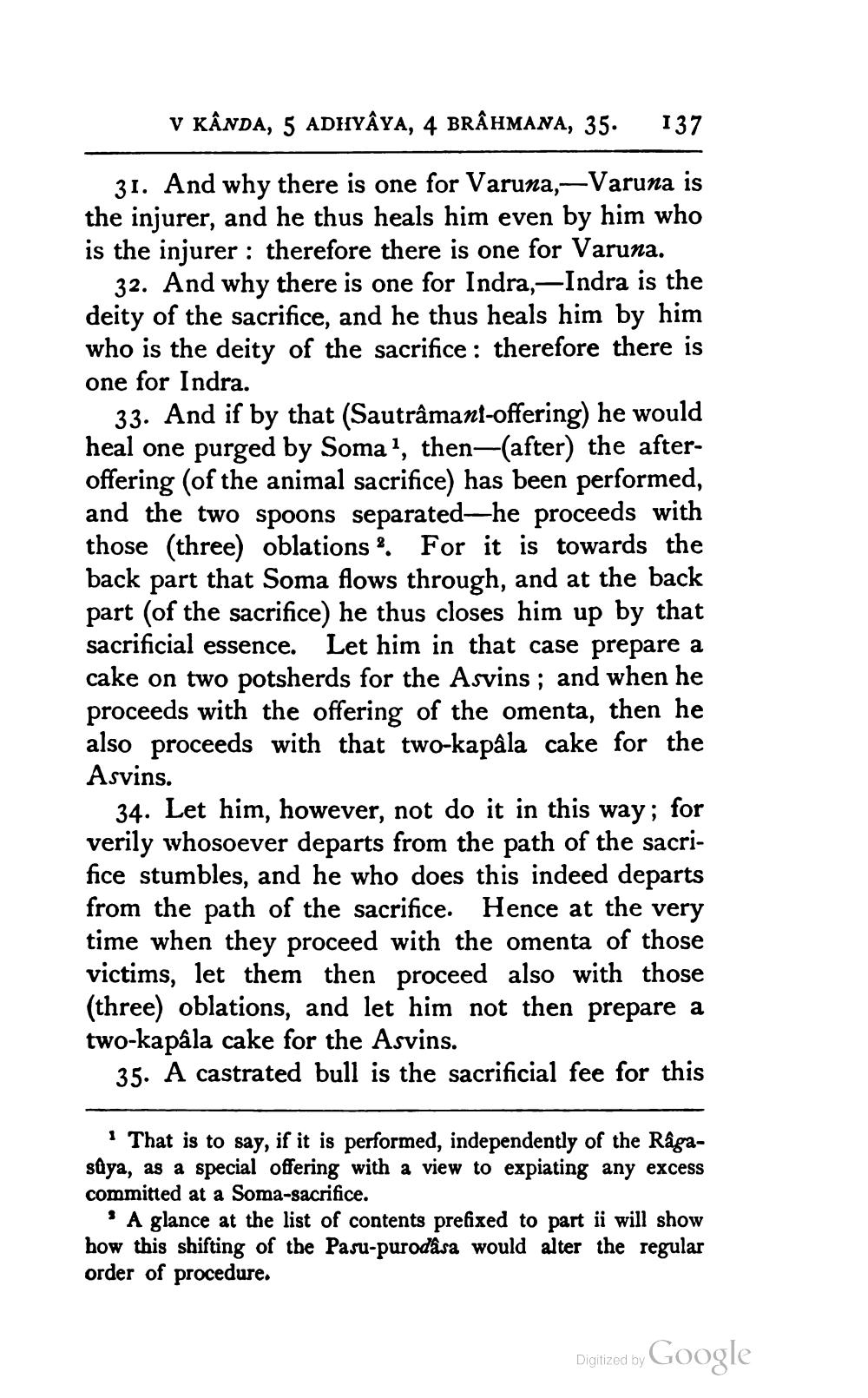________________
V KÂNDA, 5 ADIYÂYA, 4 BRAHMANA, 35.
137
31. And why there is one for Varuna,–Varuna is the injurer, and he thus heals him even by him who is the injurer : therefore there is one for Varuna.
32. And why there is one for Indra,—Indra is the deity of the sacrifice, and he thus heals him by him who is the deity of the sacrifice: therefore there is one for Indra.
33. And if by that (Sautrâmant-offering) he would heal one purged by Soma', then—(after) the afteroffering (of the animal sacrifice) has been performed, and the two spoons separated-he proceeds with those (three) oblations. For it is towards the back part that Soma flows through, and at the back part (of the sacrifice) he thus closes him up by that sacrificial essence. Let him in that case prepare a cake on two potsherds for the Asvins ; and when he proceeds with the offering of the omenta, then he also proceeds with that two-kapala cake for the Asvins.
34. Let him, however, not do it in this way; for verily whosoever departs from the path of the sacrifice stumbles, and he who does this indeed departs from the path of the sacrifice. Hence at the very time when they proceed with the omenta of those victims, let them then proceed also with those (three) oblations, and let him not then prepare a two-kapâla cake for the Asvins.
35. A castrated bull is the sacrificial fee for this
That is to say, if it is performed, independently of the Rågasûya, as a special offering with a view to expiating any excess committed at a Soma-sacrifice.
' A glance at the list of contents prefixed to part ii will show how this shifting of the Pasu-purodása would alter the regular order of procedure.
Digitized by Google




